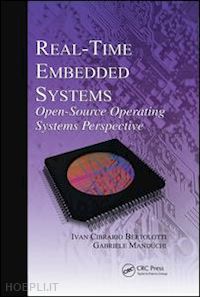From the Foreword: "…the presentation of real-time scheduling is probably the best in terms of clarity I have ever read in the professional literature. Easy to understand, which is important for busy professionals keen to acquire (or refresh) new knowledge without being bogged down in a convoluted narrative and an excessive detail overload. The authors managed to largely avoid theoretical-only presentation of the subject, which frequently affects books on operating systems. … an indispensable [resource] to gain a thorough understanding of the real-time systems from the operating systems perspective, and to stay up to date with the recent trends and actual developments of the open-source real-time operating systems." —Richard Zurawski, ISA Group, San Francisco, California, USA Real-time embedded systems are integral to the global technological and social space, but references still rarely offer professionals the sufficient mix of theory and practical examples required to meet intensive economic, safety, and other demands on system development. Similarly, instructors have lacked a resource to help students fully understand the field. The information was out there, though often at the abstract level, fragmented and scattered throughout literature from different engineering disciplines and computing sciences. Accounting for readers’ varying practical needs and experience levels, Real Time Embedded Systems: Open-Source Operating Systems Perspective offers a holistic overview from the operating-systems perspective. It provides a long-awaited reference on real-time operating systems and their almost boundless application potential in the embedded system domain. Balancing the already abundant coverage of operating systems with the largely ignored real-time aspects, or "physicality," the authors analyze several realistic case studies to introduce vital theoretical material. They also discuss popular open-source operating systems—Linux and FreRTOS, in particular—to help embedded-system designers identify the benefits and weaknesses in deciding whether or not to adopt more traditional, less powerful, techniques for a project.












